I've always loved Halloween, and I usually do something "seasonal" when it comes around. As a disclaimer, I have to tell you that if you're one of my vegetarian or vegan friends, you'll probably want to skip this one. If you eat meat, and you appreciate the interesting odd tidbit, you may find it interesting, as I did.
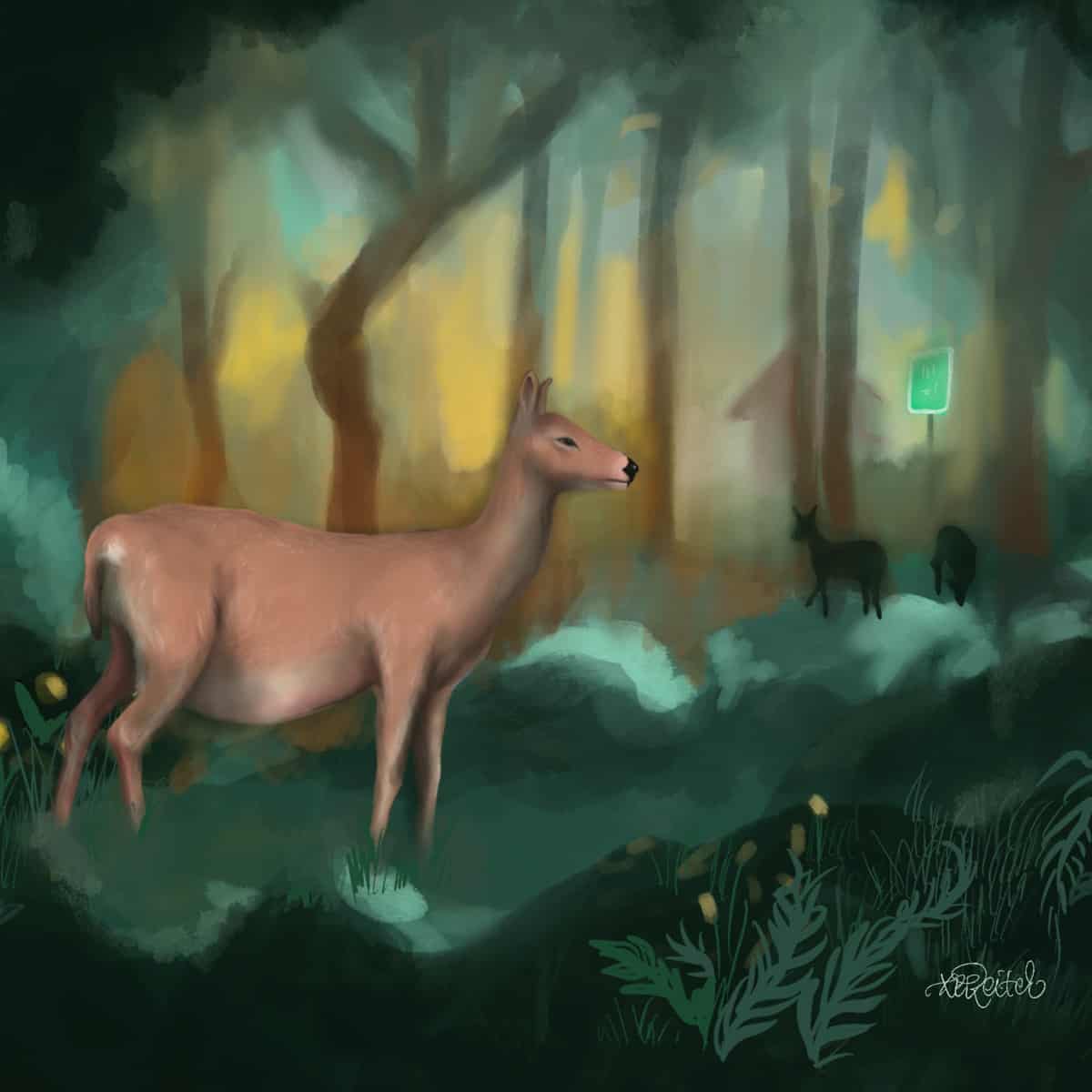
Most of you will know that there are a lot of deer in America, and that human-deer conflicts from overpopulation can be an issue in some places. In a way we've created a new, almost perfect habitat for wild creatures to find food. We all know racoons are adept at opening garbage cans. Squirrels love nuts, but also don't mind a slice of old pizza.
Bears (on my mind as I'm getting ready for an off-grid trip into the British Canadian Wilderness as I write this) are well known for being adaptive carnivores. And, as my hosta-growing neighbors can tell you, an urban garden and landscaping is a just a giant, 24-hour salad bambi bar.
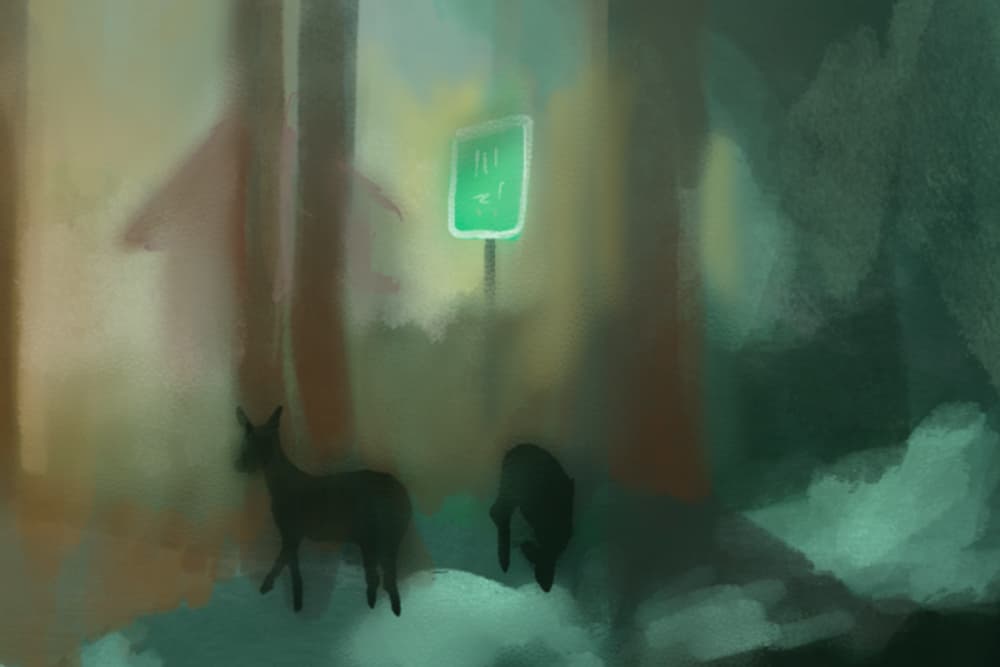
I'm not even going to try to tackle arguments for or against urban hunting/culling, overpopulation, or the destruction that deer can rue unchecked on local ecology (the more pressing discussion as opposed to ethics, in my mind).
Those arguments are far too deep, sprawling, and often too opaque to cover in 1000 words or so. I do believe that the actions of man have made it so that the population needs to be kept in check, but what the most efficient and humane way to go about that is a gladiatorial arena of opinions and emotions for some.
The reality is that plenty of urban areas have deer culls, and will continue to for the foreseeable future (one location I reference used their cull to donate 8,600 pounds of venison to food shelves-a good byproduct I think). What I'm talking about today involves something much more focused on the meat of deer itself, and the timeline at which they're harvested.
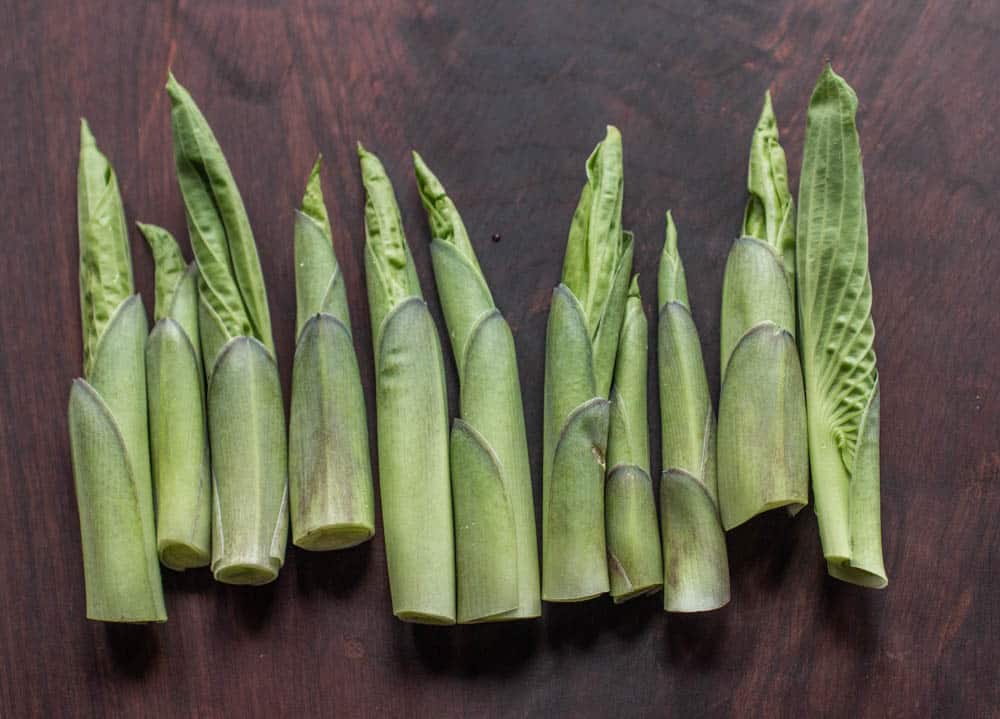
In Wisconsin and Minnesota, the deer season runs (roughly here, including archery) from late September to mid November. In places where urban deer culls are held, the season may not be in the fall, it might be later in the winter, or nearly spring, or, as in the case of the cull at U-M Dearborn I link to at the end of this post, over Spring break.
Mating season of deer should be around October-Dec. When a hunter harvests a doe, the last thing they probably think about is if she'd been with a buck. If you harvest and butcher one of those does in the spring though, the butchery can be, ahem, more interesting.
So, just so happens I have a friend in Virginia that participates in his local urban deer cull, and it's in the spring. And, for the past few years, the does he's harvested have had some extra baggage in their unborn fetuses. So, he sent me one to cook. Thanks Mark.
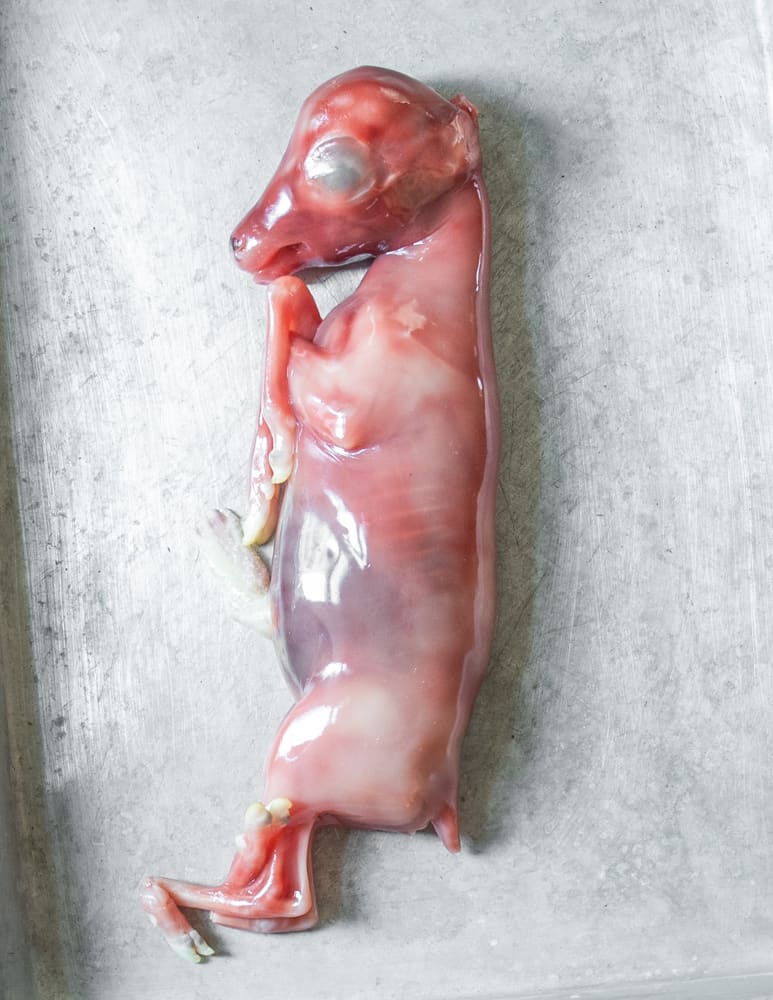
I've always been fascinating by the odd, unusual edible, and, I'm also a passionate consumer of offal and organ meats, so, it's honestly right up my alley. What I really wanted to know though, was if there was a tradition of eating unborn animals around the world I could find. Besides a casual Reddit mention, I can't.
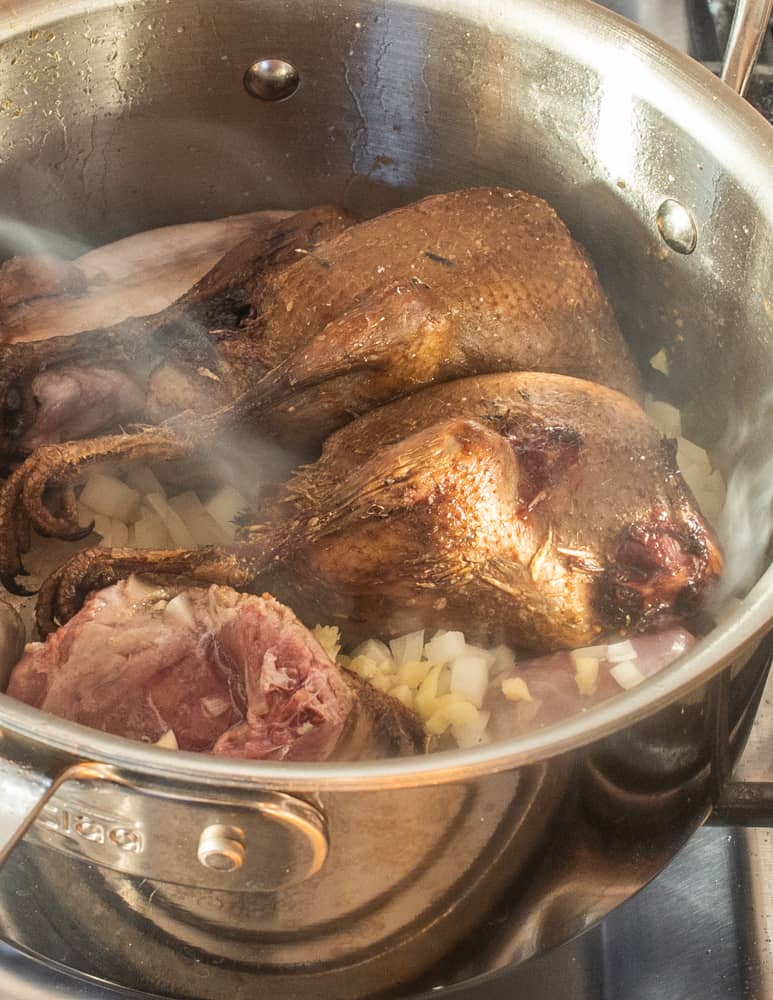
But, humans, enterprising beings that we are, have undoubtedly eaten them, although the only historical anecdote I've come across is Indigenous people cooking buffalo fetus for the elderly who have problems chewing. At the end of the day, meat, is meat.
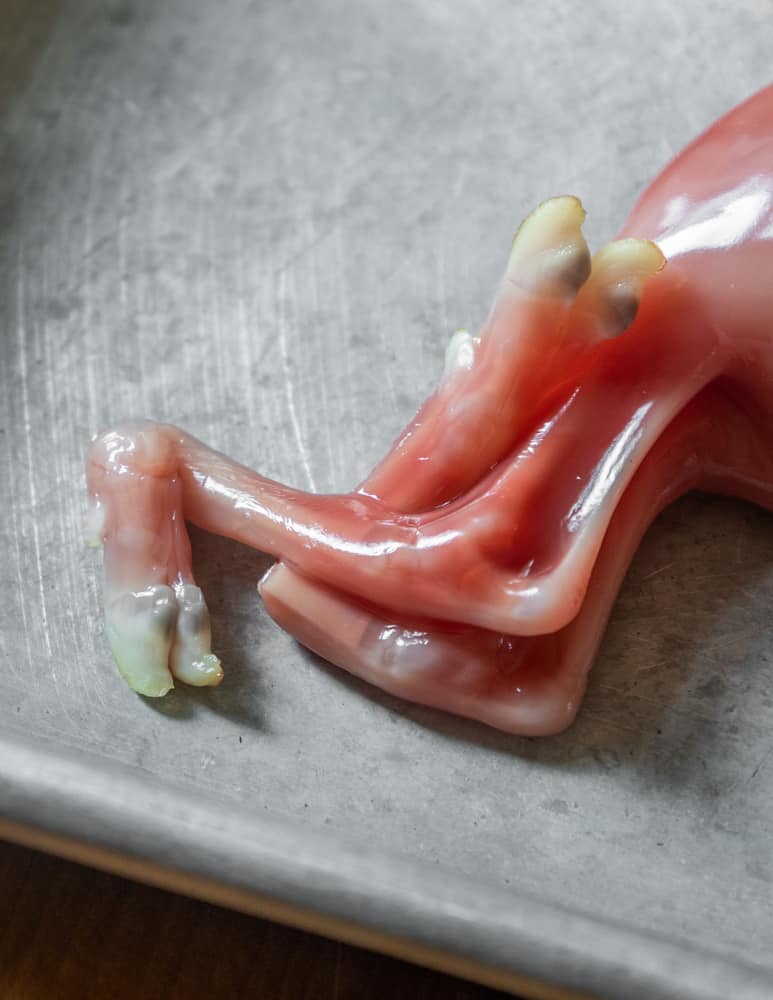
Unpacking the cooler my friend overnighted me, I found a little vacuum sealed bag with what looked to be a squirrel inside. For all intents and purposes, I'd assume you could cook a small fetus of similar animals of similar size as you would any small game. And small game is exactly what my unborn deer tasted like.
What does it taste like?
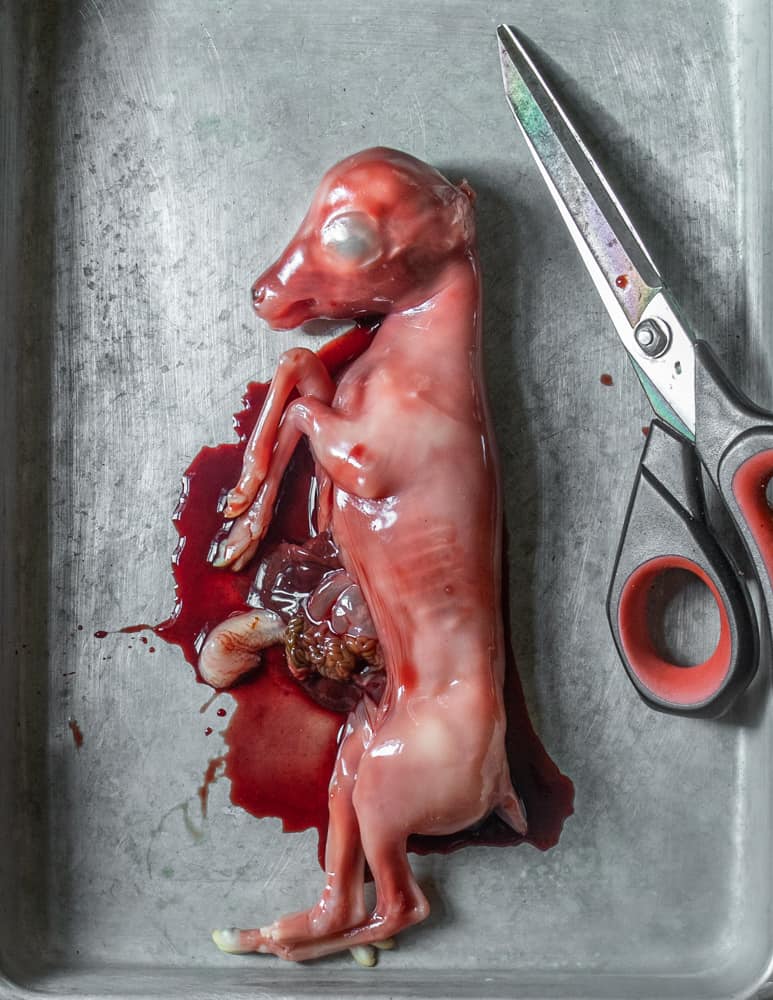
The big question. If you can get past the aversion, which, is, to be blunt, an inculturalized phobia other (non-American) people around the world probably wouldn't have a problem eating, a deer fetus cooks up like a squirrel or other very small game, and tastes like meltingly tender deer veal. I found it mild, extremely tender and pleasant.
Imagine eating the most tender confit you've ever had. It is in no way strong tasting like organ meats or offal. I ate all of it's organs to compare them with other small game, and found them near-identical to rabbit and squirrel offal in taste, which are all mild and delicious. I often compare small game offal to poultry organs (chicken, pigeon etc) as their size and taste is pretty similar.
Other notes
The proto-skin
Everything is mini, and in the process of being formed at this stage, including the skin, which feels a bit like a layer of translucent fat, and, although it won't render out anything noticeable, at least from my experience, seems to really insulate the meat and keep it extremely moist. it was delicious, and seemed to melt into the meat per caul fat.
The tiniest of bones
One hurdle will cooking small game is that the bones can be tiny and hard to keep track of. With rare exception, I do not like bones in my soup and I find it off-putting, as will any average dinner guest.
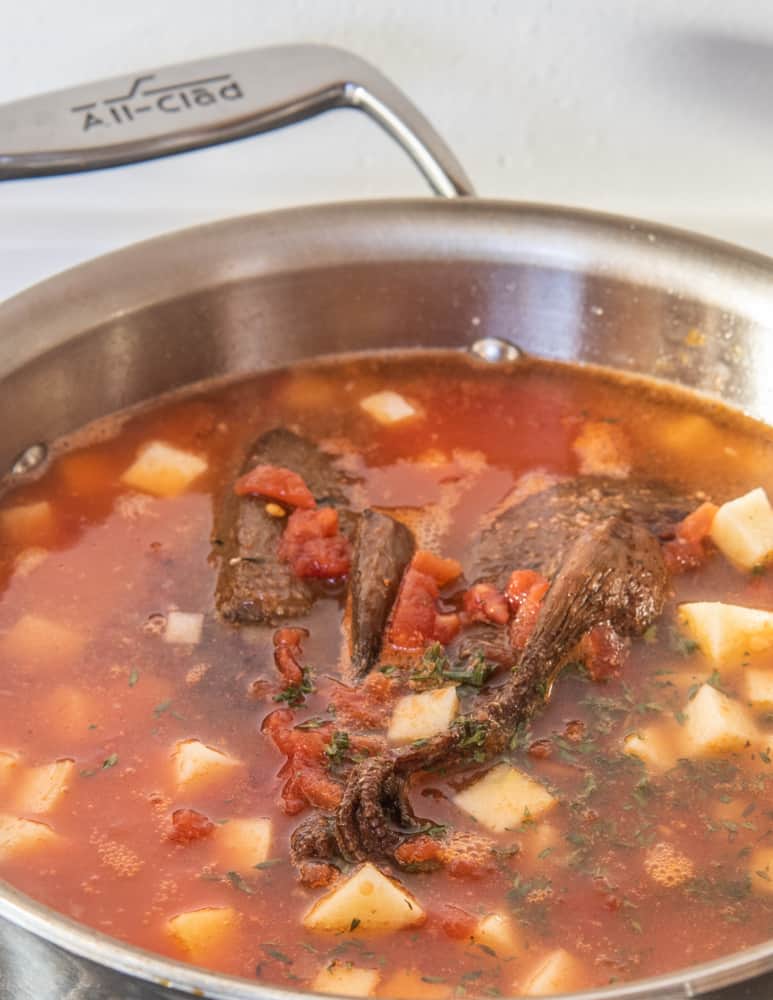

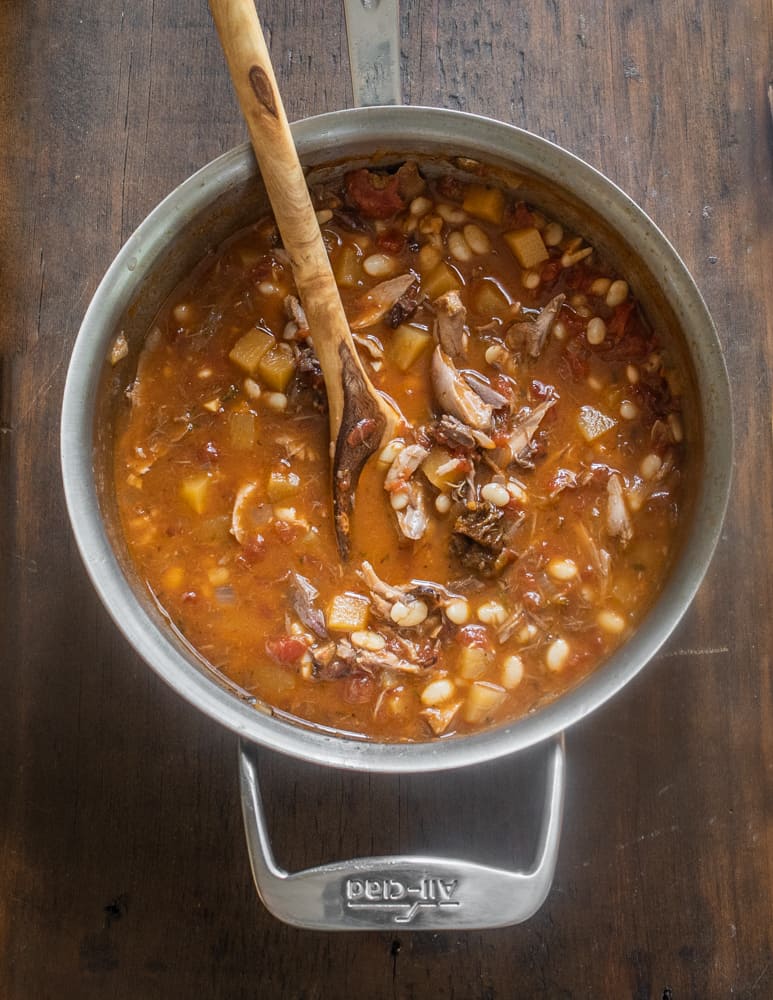
That being said, as it was the size of a large squirrel, it wasn't going to make a huge meal. With the higher proportion of bones, barbecuing it and slapping it on a bun wasn't going to work, so I turned to a classic small game recipe: the ol' Brunswick stew.

Brunswick stew is traditionally made with different types of small game, so it worked out just fine. To bulk the meat out I added 2 smoked pigeons from the freezer, rounded it with some of my favorite heirloom tepary beans from Romona Farms.
I also replaced the now common ketchup or barbecue sauce with a dash of birch syrup and some canned tomatoes. It made for one of the most interesting meals of small game I've had to date. If I'll do it again, I don't know.
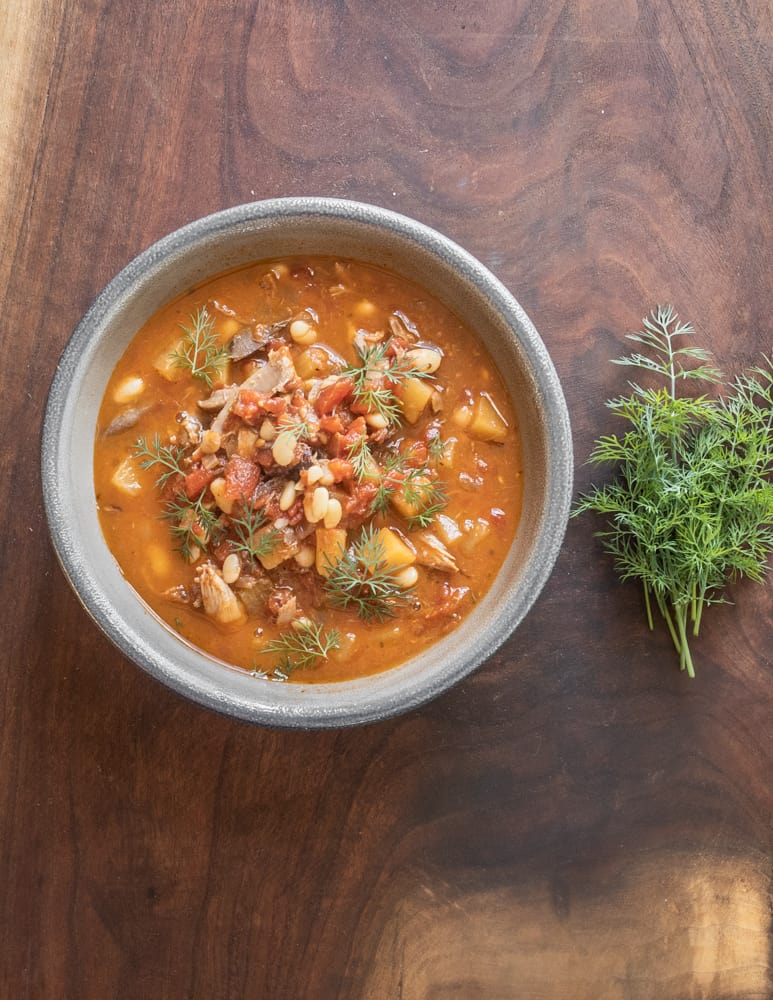
Brunswick Stew with Smoked Pigeon, Young Venison and Tepary Beans
Ingredients
Stew
- 2 whole pigeons or a comparable amount of poultry, about 1 pound total
- 1 unborn venison fetus or 1 lb or bone-in small game, such as a squirrel
- 2 oz smoked bacon preferably in slab form, diced ¼ inch
- 5 oz 1 medium onion, diced ½ inch
- 2 large cloves of garlic minced or grated
- 1 tablespoon rendered animal fat such as duck or pork
- 2 teaspoons chopped fresh thyme
- 2 tablespoons birch syrup
- 8 oz diced potato rutabaga or turnip
- Kosher salt and fresh ground black pepper to taste
- 1 large can whole peeled tomatoes
- ½ cup dry white wine
- 1 cup good strong meat stock
Beans
- ½ cup dried tepary beans or ¾ cup cooked beans
- 1 small onion peeled, left whole, and studded with 5 cloves
- 1 large clove garlic peeled and lightly crushed
- 1 large dried bay leaf
- 3 cups water
Serving
- Slices of good bread grilled or toasted
Instructions
Pigeon
- Season the pigeons all over with salt and pepper and allow to rest for at least an hour, and preferably overnight. The next day, smoke the pigeons at 250 F for 2 hours, then cool and reserve.
Beans
- Bring the beans, onion, garlic, and bay leaf to a boil, then turn the heat to a simmer and cook for 3-4 hours, or until the beans are tender (tepary beans can take twice as long to cook as most beans). Allow the beans to cool in their liquid while you prepare the rest of the ingredients. Reserve the bean cooking liquid just in case the pot threatens to get dry.
Stew
- In a dutch oven or similar pot of 3 quart capacity, render the bacon in the fat until lightly browned, then add the small game pieces, moving the bacon to one side of the pan, and brown lightly. Add the onion and garlic to the pan and cook for 5 minutes more. Add the remaining ingredients, including the cooked beans, bring to a simmer, cover, leaving the lid ajar, and simmer for 2 hours, or until the meat moves freely from the bones. Cool the stew until you can handle the meat.
- Pick the meat from the bones, discarding the pigeon skin and bones from the small game, then add back to the pot, double check the seasoning for salt and pepper, adjust as needed, adding some of the reserved bean liquid if the liquid gets low, and serve with a good slice of crusty bread.

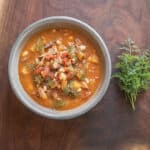
Alan bergo is a demented psychopathic demon
Alan bergo is a sick, demented, deranged, demonic entity who will soon enough take up his residence in hell where he belongs.
Alan Bergo
So glad you liked the post.
Anthony Hill
You people are a bunch of Neanderthals...its bad enough to be out there needlessly killing animals when you can buy meat from the grocery store but to actually tear an unborn fetus from an animal, gut it and cook and eat it is just savage!! I hope all you Trump supporting gun toting holy rollers that are soo apposed to human abortion arnt the savages cooking unborn fetuses from animals you murdered with your own hands.....you people shouldnt be allowed to walk the earth with the rest of us because your no different than serial killers....
Alan Bergo
"How do you know someone's a vegan or vegetarian?" "Don't worry they'll tell you". Politics is not permitted on my site and I'm happy to ban your IP address.
Jenn
I came here after watching the end of episode 65 of THE STORY OF YANXI PALACE. The empress is eating "deer fetus soup" as an anti aging tonic. I am surprised to find there is still a version!
Matthew Kaney
I am too much of a sap to do this. I even feel bad eating veal and lamb (ultimately it doesn't stop me though lol). This is not a judgement though, as your arguments are sound. My view is not rational, it's just emotional. Little baba too cute 😀
Alan Bergo
Yeah I feel ya. To be honest, I had to butcher an ewe that was having pregnancy issues on Easter (of all the days) this year. I didn't keep the fetus. Once was probably enough for me.
sarahspectacular
There is a lamb fetus and millet porridge recipe in 'The Book of Jook' by Bob Flaws. This is a book of medicinal porridges from Chinese medicine. It is indicated for a type of chronic asthma with particular other symptoms. It is not for general consumption but for sick people only. That said, it would not be harmful to eat for a regular person, but definitely not something to eat regularly. The difficulty in sourcing the ingredient alone would be prohibitive for most. My masters degree is in Chinese medicine.
Alan Bergo
This is great Sarah. Thanks for sharing. Not a lot of people who can chime in on something like this!
sarahspectacular
Happy to share. I've learned a lot from reading your blog so it's only fair.
Marge
Oops! I meant balut...
Marge
As to other cultures and fetal animals, what about bulgogi? It is a developing egg, so not from an internal pregnancy, but still similar.
Marge
Very interesting! I am a nose-to-tail eater, and if I had ever gotten a pregnant deer, I would have to try it! But I have not... Yet... I am also curious about the uterus (is it like muscle meat?) and placenta. (Yes, I know many of my friends and family would find my interest ghoulish)
Alan Bergo
Marge, I wasn't sent the placenta or uterus so I can't speak to that. As for the balut, that's a good parallel I hadn't thought of. As the undeveloped bones are consumed, I didn't really care for them when I tried them. Acquired tastes.
Hyde
I actually don't like venison, but if we became a dystopian society where everyone becomes hunters/gatherers again, then yes, I'd think I would partake some Brunswick Stew in a heartbeat. More importantly, kudos to you and your friend who sent the deer fetus, at least your using all of the carcass, which is more than most people can say.
I do recall seeing some Russian Tuvans eating the eyeballs of a large yak on some documentary, so I bet they don't waste much either.
lisa
I do not understand its feet! That's what underdeveloped split hooves look like??? I'd swear I see claws in that photo.
Gene
Agree, not a deer. Perhaps the squirrel that was referenced.
Alan Bergo
You're right, that picture wasn't of a deer! I feel silly. Here's what happened: I originally tested out the proportions with a squirrel and took images just in case I didn't care for the deer. I don't know how I got those mixed up, but I mistakenly chose the wrong images, so I probably saved the real ones in another folder by accident. I replaced the squirrel with a low res version of the real deal, I have the actual images up once I find them in a day or two. You will see visible mini-hooves.
Linda Bryan
For what it's worth, in the fur trade era before Minn. and Wisc. Territories, a "fawnskin" was a unit of measurement. Traders purchased fawnskins of wild rice from local harvesters or accepted them in payment to zero out a purchase made on credit.
Linda Bryan, member of LaCompagnie HSP, an organization of fur trade reenactors.
Artem
Very interesting! Thanks for sharing!
Alan Bergo
Thanks, I was a little nervous and saw a lot of people unsubscribe after this post went out, but I am here to be a standard bearer of the arcane, so....it is what it is. 🙂 Thanks for keeping an open mind.
James
I vaguely recall seeing something about fetal goat being a delicacy in Goa.
Alan Bergo
Thanks James, going to look that up.